The emerging and disappearing of images – a space in-between presence and absence, desire and loss
Katherine Bull’s latest series at SMITH in Cape Town see her continue her role as an interloper between the moving and the still. Afterimage features paintings and drawings captured as impressions of rear-projected moving images. Bull draws on a host of live feed projections – from sites tracking the movements of animals at a watering hole on a game farm in Mpumalanga or the pacing of a polar bear in captivity in a zoo in Denmark, to a porn site that allows voyeurs to watch a ‘Latino babe’ sleeping and waking as an enticement to engage in a paid Skype call. Questions of intrusion and empathy arise in these blurs between the animal and the human, asking which is caged.
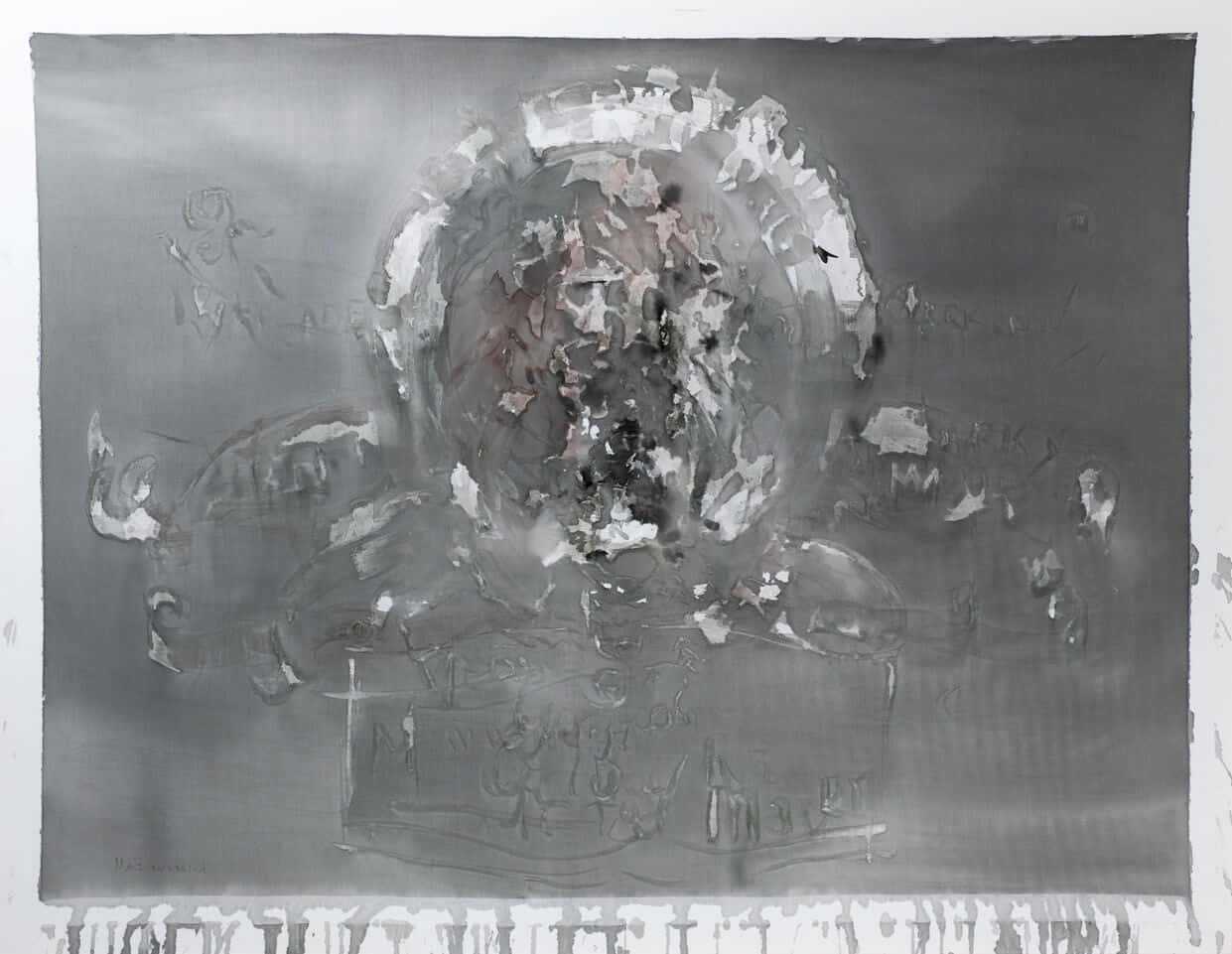 Katherine Bull, MGM Lions, 2019. Ink on cotton, 128 x 165cm. All images courtesy of the artist & SMITH.
Katherine Bull, MGM Lions, 2019. Ink on cotton, 128 x 165cm. All images courtesy of the artist & SMITH.
Your latest series of paintings and light drawings showcased at SMITH were created through ‘drawing performances’ – could you describe this practice of yours?
Many of the paintings and drawings from Afterimage were created by painting from online digital platforms such as live webcam feeds and Youtube videos and audio. This process developed from live drawing performances that I have done over the last eight years or so. Whether drawing from a Television series, live webcam feed, Skype chat, Youtube archival footage and audio or reverse Google Image searches, my intention is to bring sensory awareness to my engagement with the online digital platform as a parallel space of encounter – both intimate and alienating. In my most recent performance I invited gallery visitors to an intimate conversation within a crowded gallery with me by choosing an online audio track (only the two of us could hear) which I then responded to by translating the sound blindfolded onto a canvas (Am I Ever Alone: Dancing to Someone Else’s Tune. 2017. Smith Studio Gallery).
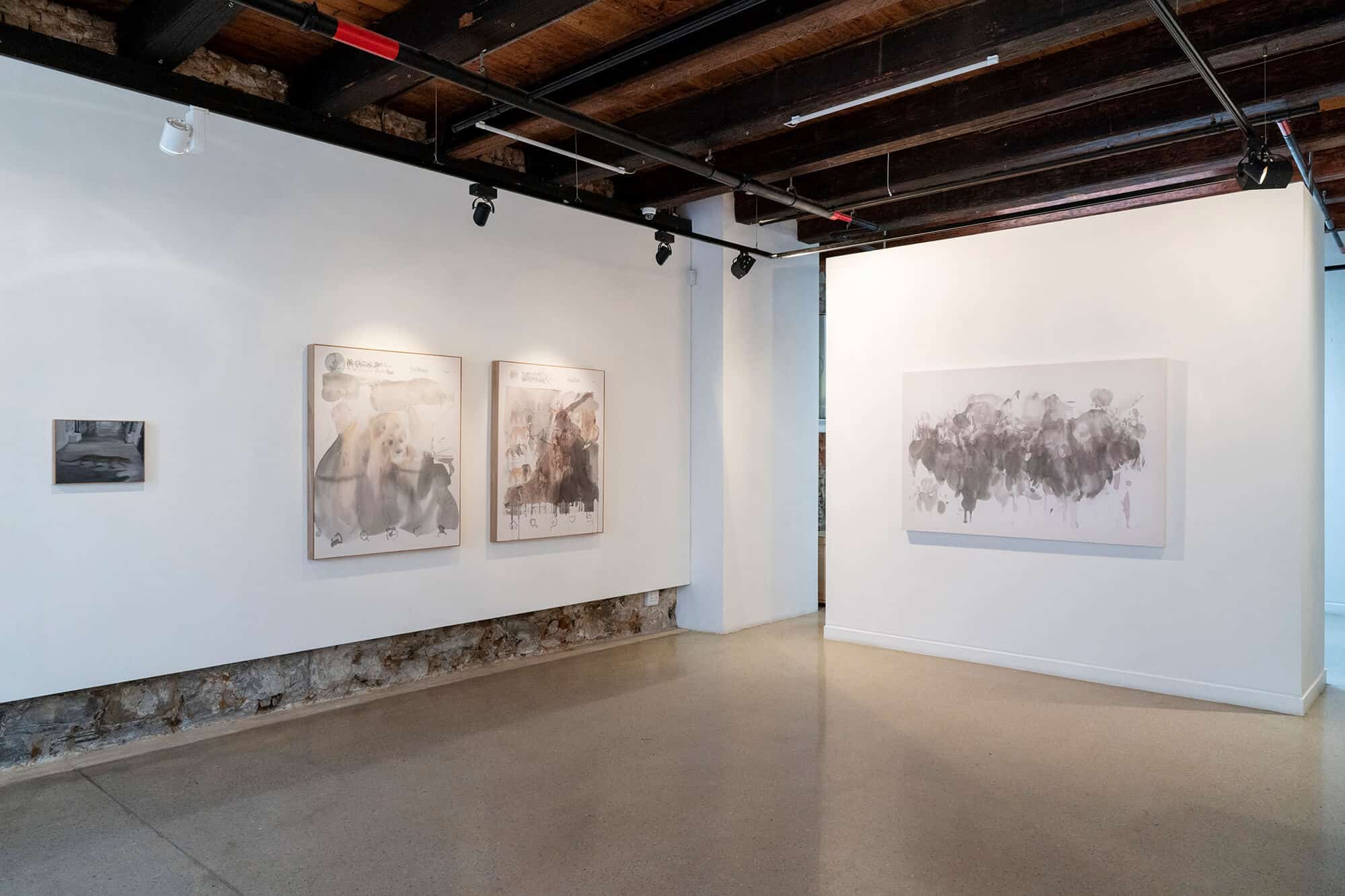 Installation shot of ‘Afterimage’.
Installation shot of ‘Afterimage’.
My interest in bringing the digital into a closer conversation with the physical body and sensory perception dates back to earlier live digital drawing performances from 2004 – 2010. In these performances, the process was inverted as I was drawing in the digital space from a live subject. For example data capture_a muse (2008. Blank Projects) in which I invited four male artists to pose naked for me for a live digital drawing session in the gallery space. The only way you could access the perspective I was seeing was in a parallel space where the drawing process was being projected live.
(links to the two performances mentioned here – http://www.katherinebull.co.za/exhibitions/data-capture_a-muse/ & http://www.katherinebull.co.za/exhibitions/am-i-ever-alone-dancing-to-someone-elses-tune/ )
Could you expand on your choice to act as medium between your materials of cotton fabric and projected moving image?
A ‘medium’ suggests for me a channelling between what is visible and what is not, what is in time and what is timeless. I would like to bring presence and awareness to navigating this online digital space we have created that simultaneously mirrors connectivity and distance, the moment and what is beyond. By working from the moving image and attempting to capture the movement in real-time I am pointing towards the impossibility of truly capturing the moment without delay. What I am left with are traces of failed attempts that point towards both the emerging and disappearing of images – a space in-between presence and absence, desire and loss.
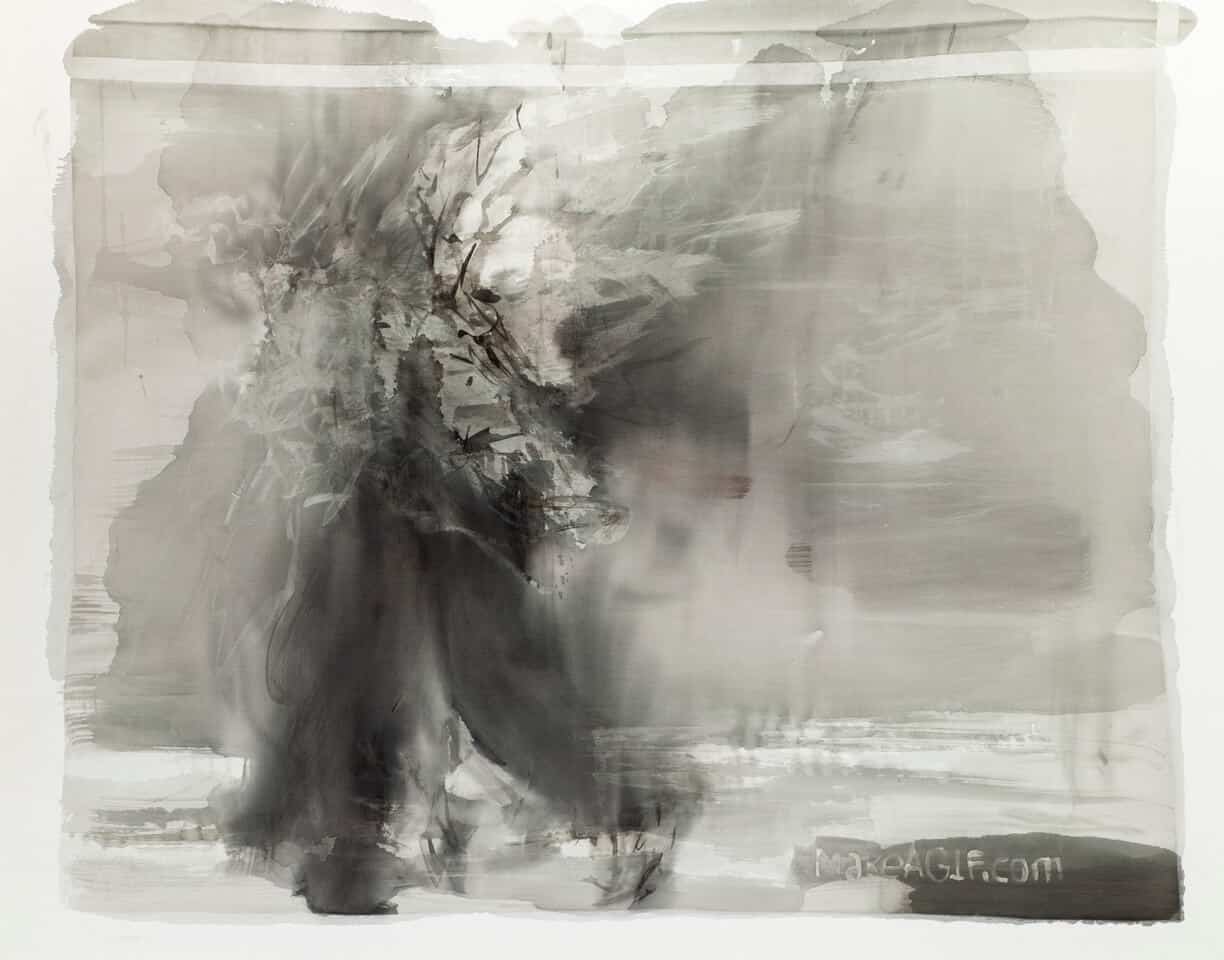 Katherine Bull, Learning to Fly_GIF, 2018. Ink on cotton, 110 x 140cm.
Katherine Bull, Learning to Fly_GIF, 2018. Ink on cotton, 110 x 140cm.
The series is titled Afterimage – could you elaborate on your choice of title?
The title Afterimage has been lurking in my mind for a while. The word appealed to me as it references the optics of perception (the phenomena of the image that remains in your retina after you close your eyes) – while also acknowledging the delay and constructed nature of perception. On a more metaphorical level, the word alluded for me to a time after the image. What would a post-image world be like? What happens once the image fades away? It is difficult to imagine a post-image world when we are so dependent on image making as verification of existence.
Voyeurship is central to the world of art as well as the online world – what comment does your work seek to make on this?
Yes, many live online platforms perpetuate voyeurism. I am interested in exploring if there is the possibility of space for intimacy, tenderness and empathy in what is often a gratuitous and superficial form of watching as a substitute for feeling connected? I enjoyed the discomfort of bringing the human and non-human animal watching into proximity in the series I painted from live webcam feeds. Questions of permission and intrusion, who is caged – the viewer or the viewed and how the perceived distinctions between animal and human-animal behaviour begin to blur. I see the work as a process of searching and questioning the experience of watching remotely rather than a statement on voyeurism.
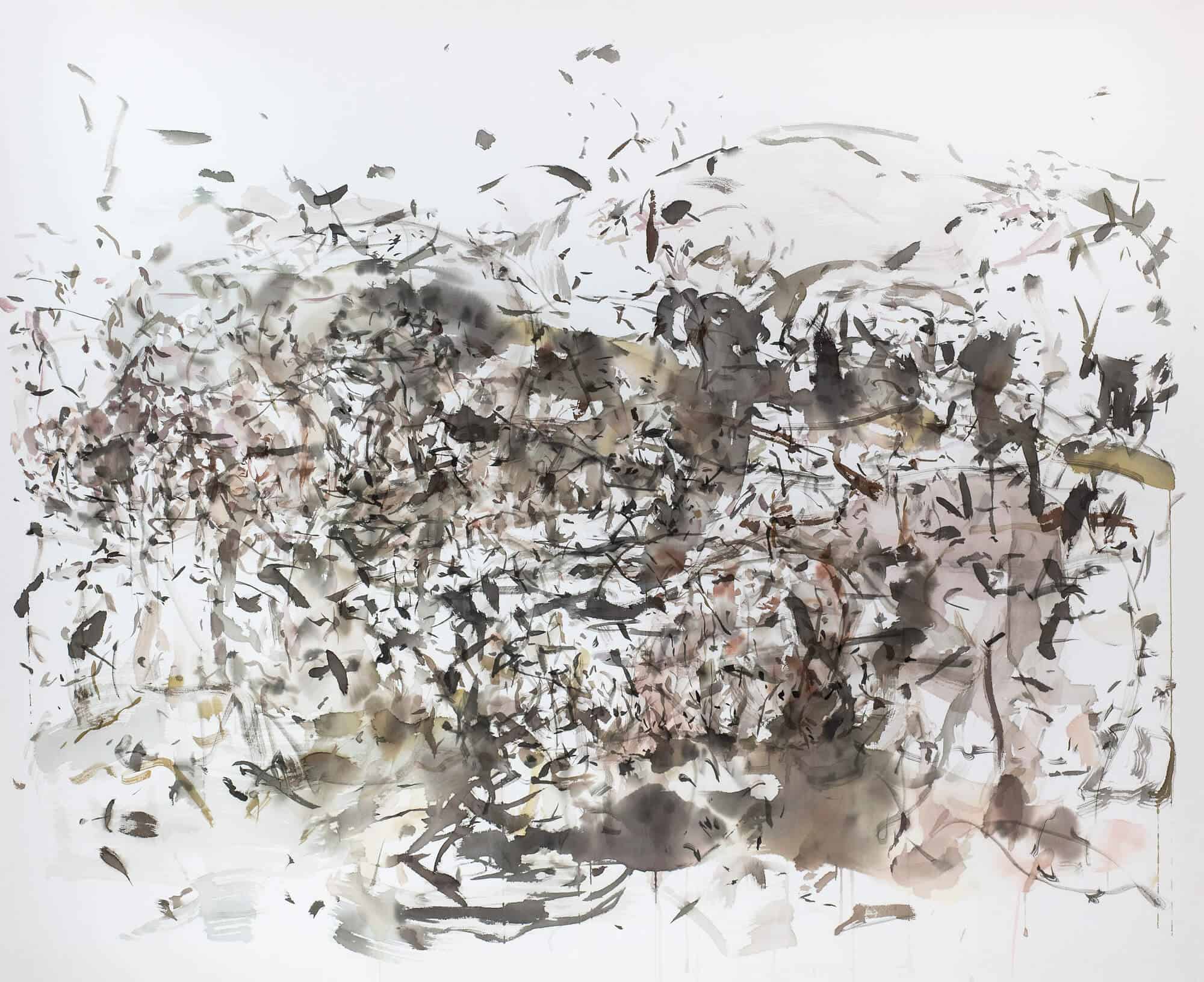 Katherine Bull, Siku & Family_Kolind, 2018. Ink on cotton, 123 x 150cm. Courtesy of the artist & SMITH.
Katherine Bull, Siku & Family_Kolind, 2018. Ink on cotton, 123 x 150cm. Courtesy of the artist & SMITH.
The muted colours of your finished works have a sombre, ghostly quality to them – do you regard this as a response to your subject matter?
The reduced palette is something that evolved through the process rather than a conscious decision. For the most part, I am attempting to capture the colour and tones I am seeing. But the nature of working from the rear projection means that you cannot really see what you are painting as you are working in the semi-dark, your marks become backlit with the projection. The more you layer the paint the less visible your subject becomes. I enjoy the tension that happens in that process between visible and invisible, cognition becomes a pure light sensation by the end of the process. So to keep the visibility of subject working with very transparent washes aids to keep that visibility for longer in the process. With hindsight, I do enjoy how the ghostly quality does speak to the temporality of the digital screen as well as the spectral afterimage of the title. And of course, it does point towards the potential mass extinction of human and non-human species. In contrast, some of the oil paintings on the exhibition show images arrested from low resolution online footage or CCTV cameras, hovering on the verge of disappearing into darkness.
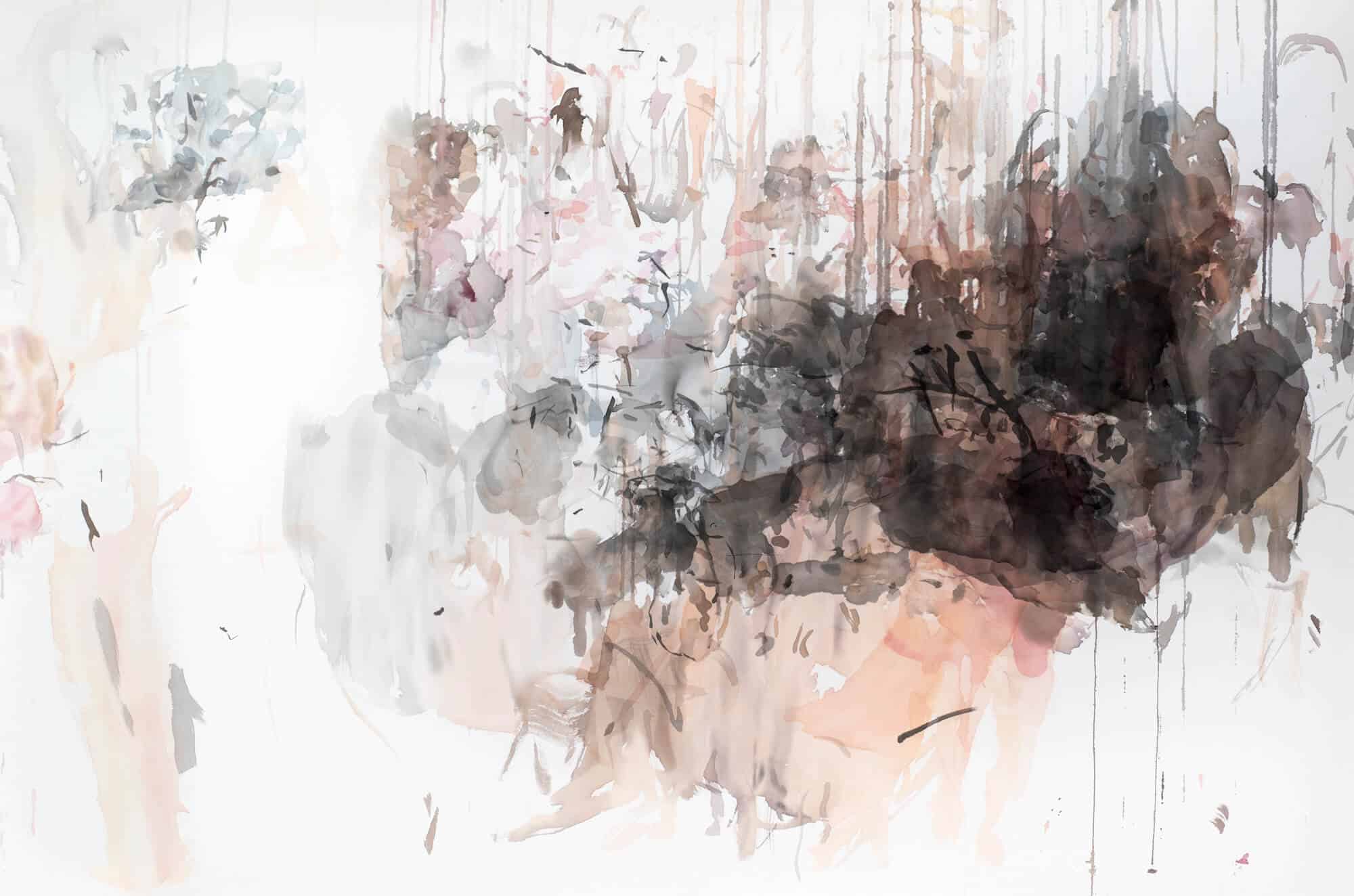 Katherine Bull, Leora & Paul, 2019. Ink on cotton, 120 x 180cm. Courtesy of the artist & SMITH.
Katherine Bull, Leora & Paul, 2019. Ink on cotton, 120 x 180cm. Courtesy of the artist & SMITH.
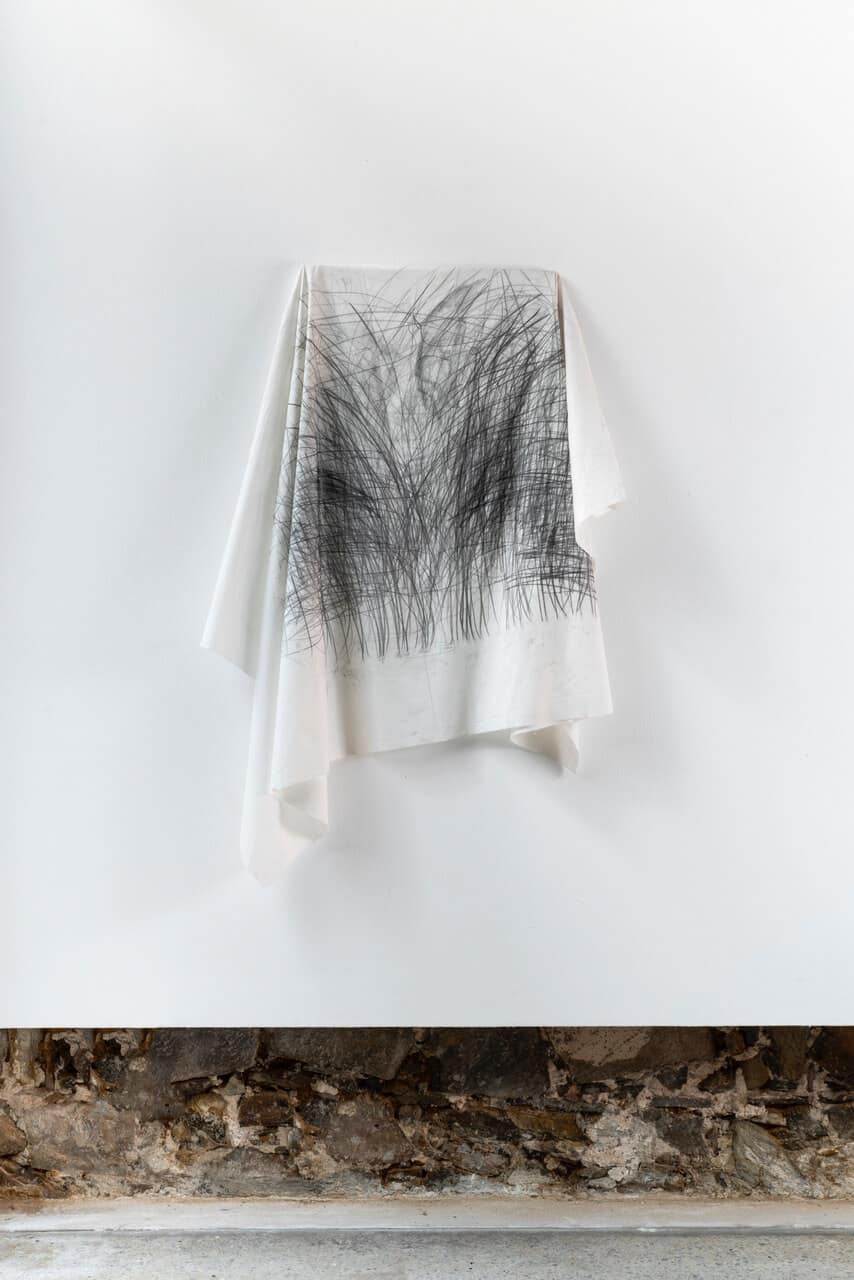 Katherine Bull, Draped Drawing, 2018. Graphite on cotton, 100 x 55cm.
Katherine Bull, Draped Drawing, 2018. Graphite on cotton, 100 x 55cm.
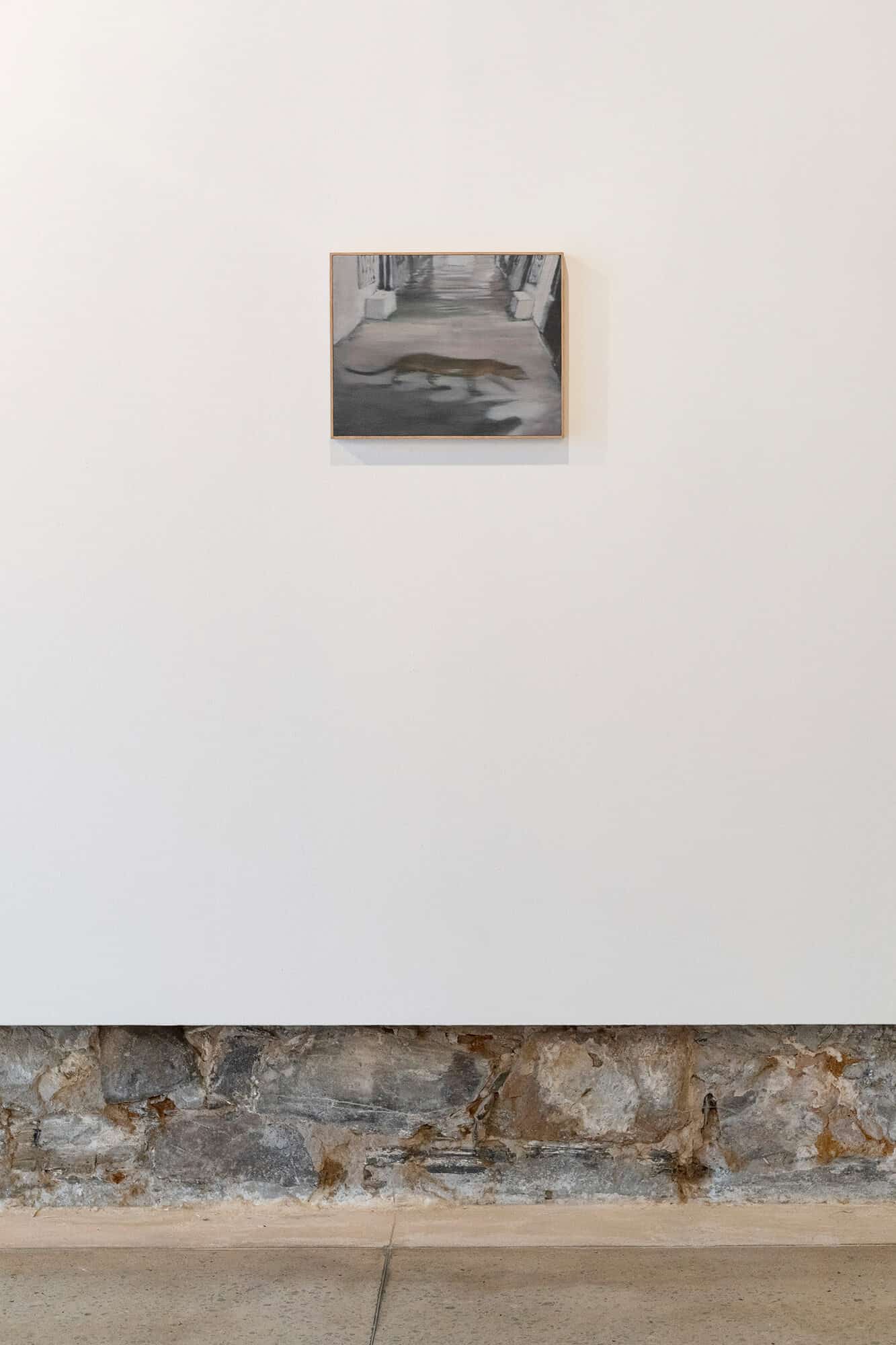 Katherine Bull, CCTV Tiger, 2018. Oil on board, 30 x 38cm.
Katherine Bull, CCTV Tiger, 2018. Oil on board, 30 x 38cm.
‘Afterimage’ will be on view at SMITH, Cape Town, South Africa, till 6 April 2019. SMITH is hosting a walkabout with the artist on Saturday 30 March at 11h00. Please arrive a few minutes earlier as the walkabout will commence at 11:00.
Zahra Abba Omar



